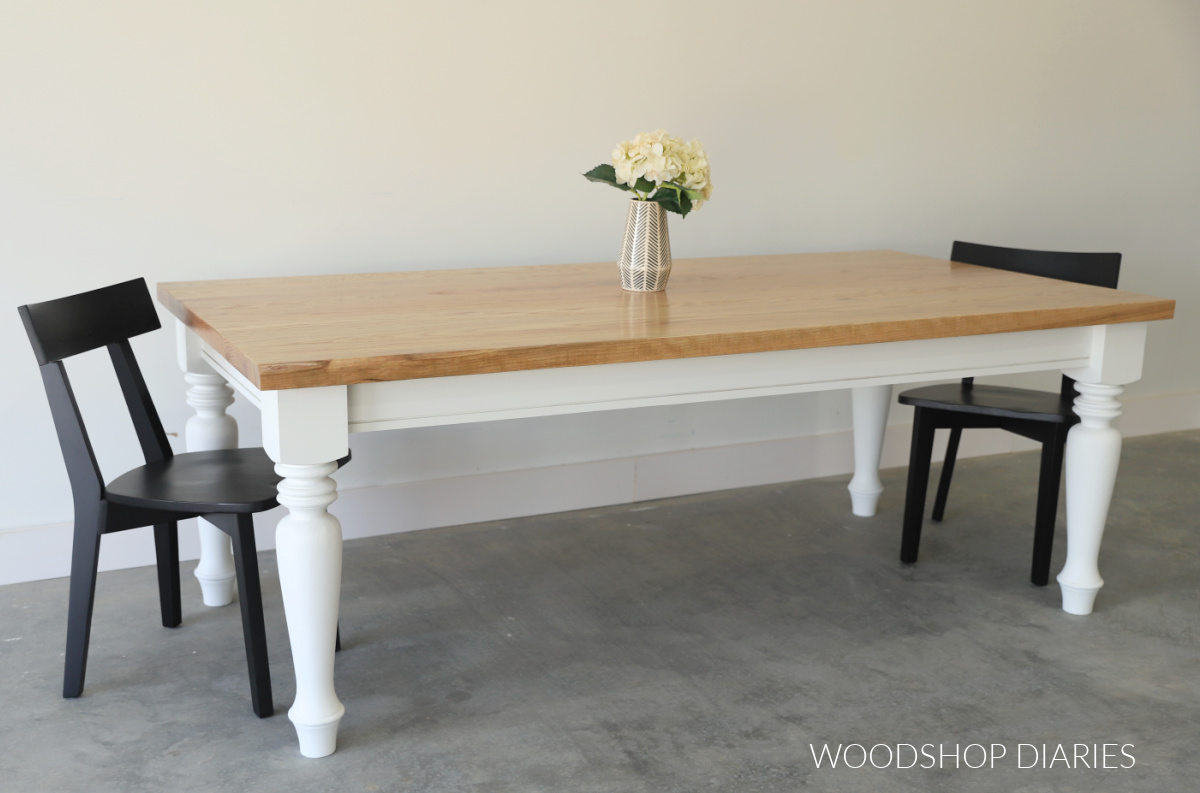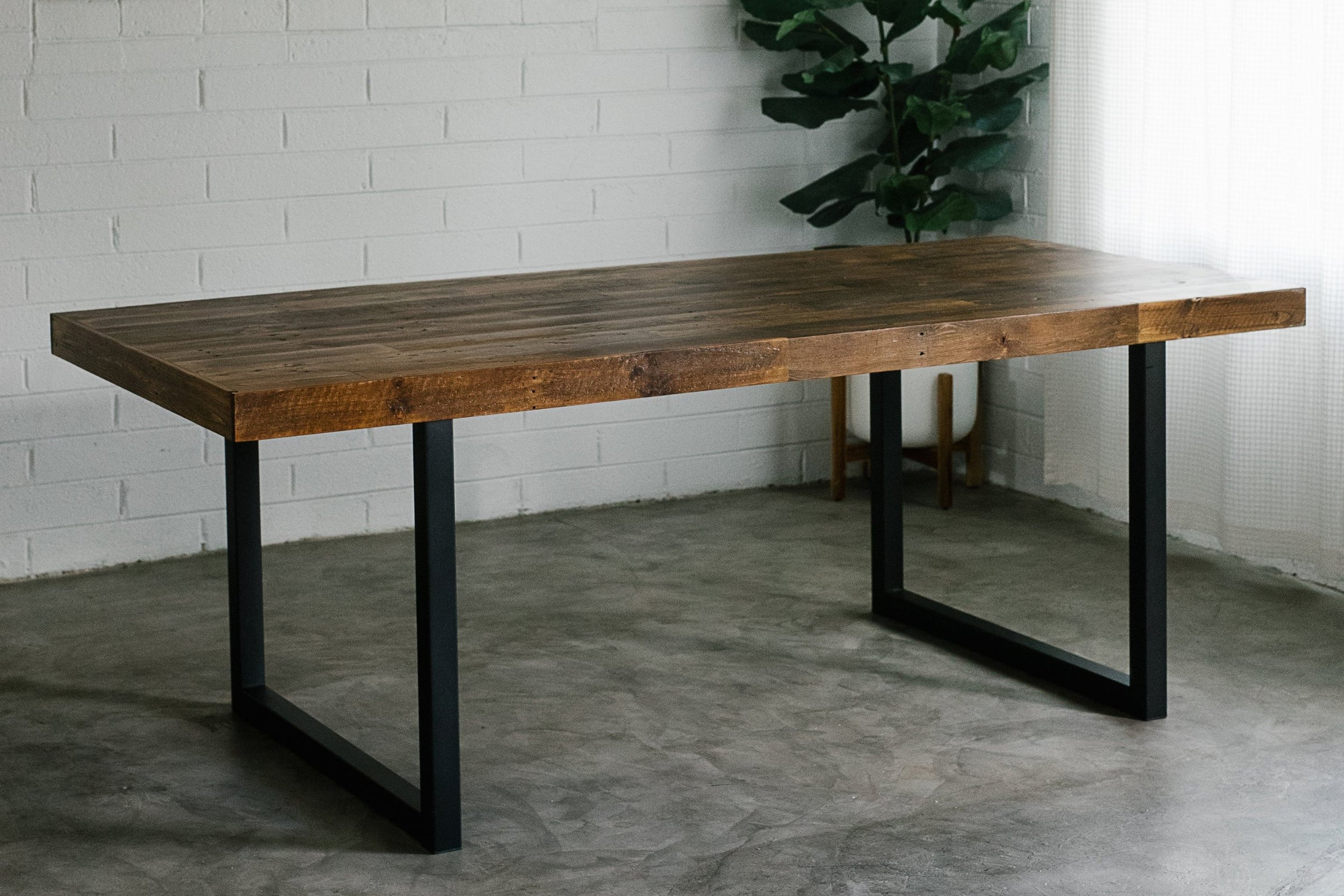What to Think About When Selecting Dining Table Legs Timber for Your Home.
When choosing timber for eating table legs, a number of important variables necessitate careful consideration to ensure both functionality and aesthetic appeal. The type of wood chosen can considerably influence the table's sturdiness, stability, and total design, while the upkeep demands might impact long-lasting functionality.

Value of Wood Type
When picking eating table legs, the selection of timber type plays an important function in figuring out both looks and toughness. Different wood species supply differing degrees of weight, resistance, and stamina to put on, which can dramatically affect the performance and longevity of the table.
Alternatively, softer timbers like ache or poplar, while much more affordable, might not use the exact same level of longevity and might require even more frequent upkeep or replacement. The wood kind also affects the table's capability to endure ecological elements such as moisture and temperature level variations. Moreover, the choice of timber can affect the convenience of completing and tarnishing, which can be vital for attaining the desired appearance.
Visual Considerations
The aesthetic allure of table legs dramatically contributes to the general visual of the dining space. Dining Table Legs Wood. When selecting timber for eating table legs, the grain pattern, coating, and color are pivotal aspects that can detract or improve from the area's design. Different timber kinds exhibit varying shades and appearances; as an example, oak offers a classic look with famous grain, while walnut supplies a rich, dark beauty
Furthermore, the form of the legs plays a crucial role in defining the table's character. Smooth, minimal legs can develop a modern feeling, while more ornate, turned legs evoke conventional appeal. The style of the legs ought to integrate with existing furnishings and the total motif of the area, whether it be rustic, modern-day, or transitional.
It is also important to think about exactly how the legs communicate with various other furnishings items, including chairs and sideboards. A cohesive style not just boosts the eating experience however additionally adds to the home's overall aesthetic coherence. Ultimately, the option of eating table legs need to be a thoughtful choice that shows personal taste while ensuring visual consistency within the room.

Resilience and Security
Longevity and stability are vital consider the selection of dining table legs, as they straight affect the long life and safety and security of the furniture. When choosing wood for dining table legs, one need to think about the integral residential or commercial properties of different wood types. Hardwoods, such as oak, maple, and cherry, are frequently chosen for their stamina and resistance to use, making them appropriate for high-traffic dining areas.
Along with the sort of wood, the construction method also plays a significant role in the overall security of the table. Legs that are well created, either via standard joinery methods or contemporary engineering approaches, will certainly give superior support and avoid wobbling. It is necessary to assess the thickness and layout of the legs; thicker legs are usually much more steady and can endure greater weight.
Moreover, the ecological conditions in which the table will certainly be utilized can impact resilience. Timber that has actually been correctly treated for moisture resistance will certainly carry out better in moist atmospheres. Ultimately, picking the best combination of sturdy wood and read this article secure building will ensure that your table remains a useful and risk-free centerpiece in your house for years ahead.
Maintenance Needs
Choosing eating table legs made from long lasting wood is just the start; comprehending upkeep demands is just as essential to maintain their appearance and capability. Different timber types call for varying levels of treatment, so it is vital to recognize what is needed for your details choice.
Routine cleansing is basic; use a soft, wet fabric to get rid of dirt and debris. Stay clear of harsh chemicals that can damage the finish. For wood finishes like varnish like this or lacquer, periodic polishing with furniture wax can enhance shine and supply a safety layer against scratches.
Preventative measures are important (Dining Table Legs Wood). Usage rollercoasters and placemats to prevent straight call with wet or hot products, which can warp or tarnish the wood. Furthermore, take into consideration positioning felt pads under the legs to stop scratches on your floor covering and lower endure the wood
Humidity control is another considerable aspect; keeping a steady environment helps to stop warping and splitting. If your eating location is vulnerable to variations in temperature level and dampness, think about utilizing a humidifier or dehumidifier as needed.
Budget Plan and Expense Elements
When planning to acquire table legs, understanding budget and price variables is vital to make an informed choice. The kind of wood selected for the legs considerably affects the total cost. Woods, such as oak or walnut, tend to be more pricey than softwoods like want, because of their toughness, aesthetic appeal, and deficiency. In addition, think about whether click here to read you are purchasing pre-made legs or deciding for custom layouts, as personalization typically incurs greater expenses.
Labor and craftsmanship additionally play a critical duty in the overall cost. Handmade or artisan-crafted legs might carry a costs price, reflecting the ability and time purchased their creation. It's critical to examine the balance between top quality and price; investing a lot more ahead of time can result in a longer-lasting item that calls for less maintenance gradually.
Verdict
In summary, selecting the proper timber for dining table legs requires cautious factor to consider of various elements, including timber kind, visual appeal, toughness, spending plan, and maintenance constraints. The choice of woods such as oak and maple can enhance both strength and visual appeal, while softer woods might be more economical but less enduring. Ultimately, a well-informed decision concerning material selection will certainly add to the total capability and long life of the eating table, making sure a useful investment for the home.
When selecting wood for dining table legs, numerous critical variables necessitate cautious consideration to guarantee both functionality and visual allure.When choosing dining table legs, the choice of timber kind plays an important function in determining both visual appeals and resilience. When picking timber for dining table legs, the grain shade, surface, and pattern are crucial aspects that can enhance or take away from the space's design. When selecting wood for eating table legs, one have to consider the inherent properties of numerous wood kinds.In summary, choosing the appropriate timber for dining table legs requires careful consideration of numerous elements, including timber kind, aesthetic allure, budget plan, upkeep, and resilience restrictions.